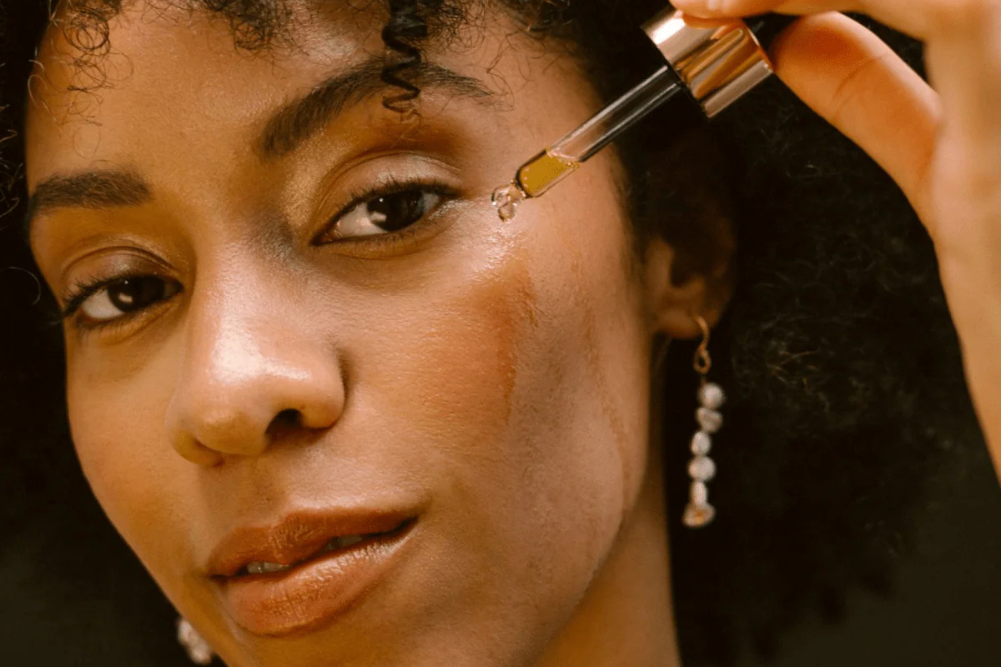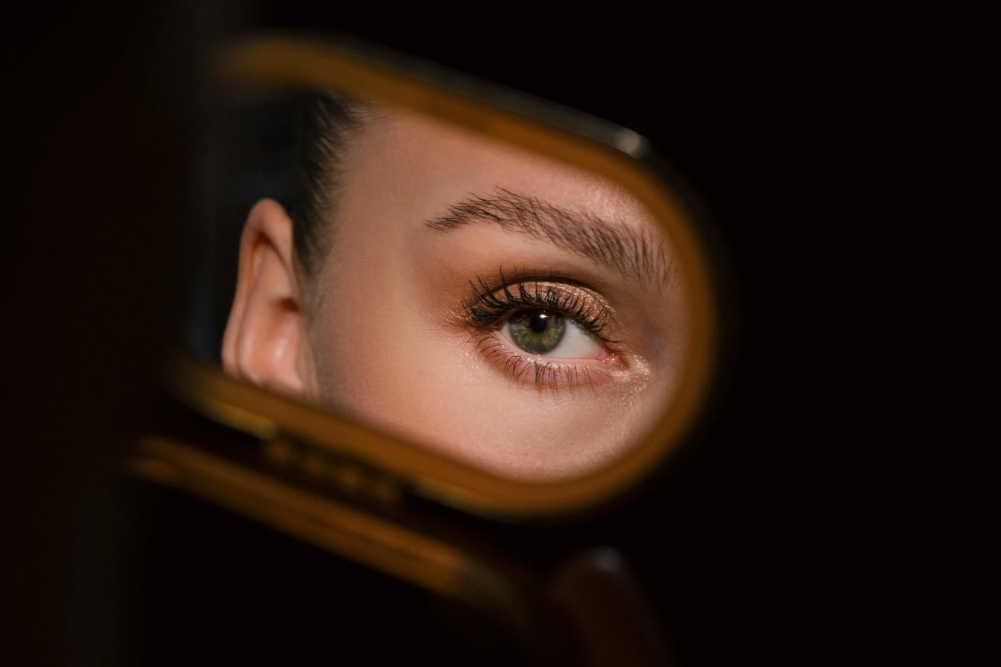10 skin-saving superfoods you need this summer
One of the most crucial environmental factors in accelerated skin ageing is overexposure to ultraviolet (UV) radiation from the sun. When the skin is exposed to excessive amounts of UV rays a series of harmful reactions occur, which is called photoageing.
Overexposure to sunlight is a major environmental factor that increases the presence of destructive free radicals in the body and skin. Free radicals play a major role in driving skin ageing as they break down collagen, which decreases the skin’s suppleness and elasticity, along with damaging DNA and promoting inflammation, which can trigger inflammatory skin conditions like eczema.
This skin damage can accumulate over the years and eventually lead to premature ageing, fine lines, wrinkles, freckles and sunspots. Studies have shown that excessive exposure to the sun is also a major cause of inflammatory skin conditions and skin cancers (melanoma and non-melanoma).
After years of exposure to the sun, the inner layers of the skin thicken and lose their ability to retain moisture, which results in the appearance of fine lines and wrinkles. This is most commonly seen around the eyes, forehead and mouth. Too much sun can also weaken the skin’s immunity.
UV rays can deplete the skin’s antioxidant defences, too, by reducing levels of protective antioxidants such as vitamins C and E, selenium and glutathione in the skin.
Difference between UV-A & UV-B rays
There are two different types of UV radiation: A (long wave) and B (mid wave). UV-A accounts for 90–95 per cent of UV rays and they penetrate deeper into the epidermis and dermal layers, causing oxidative stress, inflammation and over-production of melanin. That “healthy” suntan is actually evidence of sun damage and is the body’s way of trying to protect itself from further damage.
UV-B radiation, on the other hand, makes up around 5 per cent of UV rays and is responsible for vitamin D production within the skin but can also be very damaging to DNA and is responsible for the development of non-melanoma skin cancers.
Sun spots
Too much sun can also cause over-activity of melanocytes (the cells that give us a tan), resulting in the development of brown freckles or sun spots seen on areas of the body regularly exposed to the sun, especially the face, neck and hands, and small white spots commonly seen on the forearms and shins. Years of sun damage can also lead to skin thinning in areas, making it more vulnerable to tears, blisters, cuts and grazes.
Although sunspots are generally harmless, they are warning signs that your skin has had too much sun exposure and you may be more vulnerable to developing skin cancer.
It’s important to become familiar with your skin so you can spot any changes, especially any changes in colour, thickness or shape of freckles, moles or sun spots. Likewise, if you have any sores that won’t heal, that are crusty or are small red lumps, make sure you have them checked by a qualified skin cancer specialist.
Skin cancer
According to the World Health Organization, the incidence of both non-melanoma and melanoma skin cancers has increased over the past decade. Currently, 2–3 million non-melanoma skin cancers and 132,000 melanoma skin cancers occur globally each year. Australia has some of the highest rates of skin cancer around the world, with nearly 2000 Australians dying from it every year.
Every time you expose your skin to the sun’s UV rays, changes occur in its cells. Skin cancer is the uncontrolled growth of abnormal cells in the skin, caused from exposure to UV radiation. Skin cancer is related to sun damage, particularly sunburn that has occurred during childhood and from long-term exposure to the sun’s UV rays. Research suggests that while skin cells are often damaged in childhood, it may be sun exposure in adulthood that triggers these damaged cells to turn cancerous.
Zinc acts as an antioxidant helping neutralise harmful free radicals, and helps protect the skin from the sun’s damaging UV rays.
Unfortunately, as our ozone layer continues to deplete, the Earth is losing its protective layer that filters out solar UV radiation from the sun. There are three main types of skin cancers: basal cell carcinoma (most common and least dangerous), squamous cell carcinoma (less common but more dangerous) and melanoma (the most dangerous).
Prevention is the best cure
Skin cancer is one of the most preventable types of cancers. The best way to prevent sun damage and the risk of skin cancer is to stay out of the sun, but then you’ll run the risk of being vitamin D deficient. So it’s important that you take a sensible and balanced approach to sun exposure. In hotter climates like Australia’s, being sun smart and wearing sunscreen is important to reduce the risk of skin cancer. Sunscreen, however, reduces the capacity of the skin to produce vitamin D. Choosing to avoid the strong midday rays and to avoid spending long hours in the sun is recommended. During summer, minimal sun exposure (without sunscreen) of 10–15 minutes a day, and in winter 2–3 hours a week, on the face, arms and hands will help you maintain adequate vitamin D levels.
Taking a combination of antioxidants including selenium has been shown to reduce early UV-induced skin redness and sunburn, helping lower the risk of chronic skin damage.
When out in the sun, especially during the middle of the day when the sun’s UV rays are most intense, apply a mineral SPF 30 sunscreen before going outside and re-apply every couple of hours. Wear a broad-brimmed hat that protects your face, head, neck and ears from UV rays and wear sun-protective clothing and sunglasses.
Remember that UV light can reflect off sand, snow and concrete, and that umbrellas and shady trees don’t provide full protection from UV rays. Take care on cooler, cloudy days, too. UV rays can penetrate clouds, so you can still get burnt. Be careful, too, during winter if you are at the snow and make sure you wear sunscreen. When you are driving be aware that you are still getting UV rays through the window. It’s common for people to have more sun spots and sun damage on the arm nearest the window when driving. Tinted car windows are a great way to reduce sun damage when in the car.
Skin-saving nutrients & superfoods
Thankfully, nature has provided us with plenty of skin-loving antioxidant-rich foods and nutrients to help fight free-radicals and help protect the skin from damage caused by too much sun exposure.
Coenzyme Q10 (CoQ10)
CoQ10 is a powerful antioxidant nutrient that has been shown to suppress the inflammatory response in skin cells caused by UV radiation exposure. A study found that CoQ10 levels were significantly lower in patients who developed recurring melanoma. Eating foods rich in CoQ10 is beneficial. These include fish (sardines, mackerel, tuna), and spinach and broccoli in smaller amounts. Taking a CoQ10 (ubiquinol) supplement is also recommended.
Zinc
Zinc is an essential mineral that plays a vital role in the health of our skin. Zinc acts as an antioxidant, helping neutralise harmful free radicals, and helps protect the skin from the sun’s damaging UV rays. The best sources of zinc are grass-fed meat, seafood, chicken, eggs, pepitas, sunflower seeds, nuts, raw cacao and tahini. Supplementing with around 45mg of elemental zinc daily is also recommended for optimal skin health, especially for anyone who is deficient in this important mineral. Zinc is also found in mineral sunscreens, as zinc oxide. Zinc offers good protection from the sun’s damaging UV rays as well as having a soothing effect on the skin.
Omega-3 fatty acids
Omega-3 essential fatty acids are highly nourishing fats that are vital for keeping skin soft, hydrated and healthy. Studies reveal that, as we get older and as oxidative stress builds up from factors such as chronic sun exposure, the healthy balance of fatty acids in our skin decreases significantly. Omega-3 fatty acids have also been demonstrated to inhibit inflammation in the skin caused by UV radiation and may even reduce risk of skin cancer. Oily fish such as salmon, trout, mackerel, cod and sardines are the best source of these beneficial fats, while planted-based sources include walnuts, chia and flaxseeds and their oils.
Vitamin E
Vitamin E is the most abundant fat-soluble antioxidant found in the skin. Vitamin E plays an integral role in the skin’s antioxidant defences. As we age and after sun exposure, the vitamin E levels in the body decrease. This important nutrient provides protection against UV radiation and free radicals that damage skin cells.
Supplementing with vitamins E and C together has been shown to provide extra protection against UV radiation, decreasing DNA damage after sun exposure. Studies have shown that, applied topically, vitamin E is an effective way to protect the skin from UV-related damage and can be used after sun exposure to reduce skin redness, swelling and thickening.
The best food sources of vitamin E include avocado, cold-pressed virgin olive oil, dark-green leafy vegetables, walnuts, almonds, pecans and wheatgerm.
Selenium
Selenium is a trace mineral that plays an important role in our skin’s cellular antioxidant defences. Selenium is a component of glutathione, one of the body’s most important antioxidants, which protects the skin from inflammation and ageing. Including selenium-rich foods in the diet may also offer protection from skin cancer.
Taking a combination of antioxidants including selenium has been shown to reduce early UV-induced skin redness and sunburn, helping lower the risk of chronic skin damage.
Brazil nuts are a particularly good source of selenium: just two a day can supply you with your daily recommended intake. Other good sources include seafood, red meat, fish, turkey, wheatgerm, eggs, garlic, wholegrain bread and brown rice.
Vitamin C
Vitamin C is a highly effect antioxidant and one of the most important nutrients in the crusade against premature ageing. It acts as a powerful free radical scavenger which helps prevent and treat UV-induced skin damage. Rich sources of vitamin C include papaya, guava, strawberries, chillies, kiwi, citrus fruits, broccoli, capsicum (peppers), mango, parsley, kale and other dark-green leafy vegetables. Vitamin C is sensitive to heat, so eating these foods raw or lightly cooked will help maximise their vitamin C content.
Tomato
Tomatoes are rich in lycopene, a phytochemical that is a highly effective antioxidant that works wonders for reducing skin-damaging free radicals, and also has anti-cancerous properties to protect cells from DNA damage. Eating more tomatoes and tomato-based products, ideally combined with fats like olive oil to enhance lycopene absorption, can help protect your skin from UV sun damage.
Green tea
Drinking green tea regularly is a fabulous way to maintain beautiful healthy skin and prevent signs of ageing and sun damage. Green tea is rich in polyphenols, namely catechins and epigallocatechin-3-gallate (EGCG), which are powerful antioxidants that can reduce premature skin ageing and offer protection against many types of cancers. EGCG slows collagen breakdown and can help regenerate ageing surface skin cells. A study from Arizona in the US found that the more hot tea people drank, the less likely they were to develop squamous cell skin cancer.
Scientists are discovering the various benefits of using green tea topically on the skin. Green tea’s high content of EGCG when applied topically can reduce inflammation and oxidative stress and lower the risk of photoageing and skin cancer.
Pomegranate
This beautiful red fruit is abundant in the polyphenols, anthyocycanins and ellagic acid, which are potent antioxidants that help protect skin cells from oxidative damage caused by sun exposure. According to a study published in Experimental Dermatology, products made from pomegranates (juice, extract and oils) have been found to have a protective effect against the sun’s damaging UV-B rays, helping prevent sun spots and serious skin damage.
Olive oil
Olive oil’s superb skin benefits are due to its rich polyphenol and squalene content. Both of these antioxidants are powerful free radical scavengers that can bolster the skin’s defences against UV rays and helps prevent premature skin ageing. Squalene is found in the skin’s sebum (oil) were it helps keep the skin moist. A large French study confirmed that consuming olive oil regularly can prevent severe facial photoageing. Olive oil is also abundant in the antioxidant vitamin E, which enhances the skin’s ability to repair and renew, while protecting the skin from sun and oxidative damage. Choose a good-quality cold-pressed virgin or extra-virgin olive oil.
A DIY Carrot & Grapeseed Oil Face Serum
This is a lovely hydrating and soothing face serum ideal for sun-damaged skin. Carrot seed oil has the ability to heal and rejuvenate the skin. It’s rich in antioxidants, particularly vitamins E and C, which protect the skin from the damaging effects of the sun. Grapeseed oil is naturally rich in OPCs (oligomeric proanthocyanidin complexes), which are potent antioxidants that have been found to play a role in maintaining healthy collagen and elastin, while protecting the skin from free-radical-induced sun damage and reducing redness and inflammation.
=R1=








